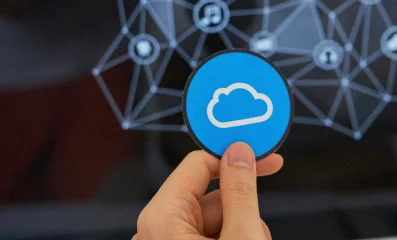Introduction
No matter how costly the project, how critical the system, or how cutting-edge the design, every software product has a finite lifecycle.
Sooner or later, every system underpinning your business will become obsolete, either because new innovations render the technology outdated or because the business's needs have changed as it's grown and evolved.
Whatever the reason, it will eventually become necessary to upgrade or replace existing software by migrating its key functionalities to a new system via legacy software modernization.
Types of software migration
That migration process can take several different forms, so before we look at how to be sure your software migration goes smoothly, let's take a moment to get our heads around the different types of software migration.
- ERP migration
As your company grows and evolves, and as global software standards change, you may find your ERP system, or several of its components have become irrelevant, negatively impacting performance and/or compromising regulatory compliance. When this is the case, it's time to look into migrating to a new system. - Database migration
When you need to consolidate and clean up your data, or move it to a system or platform where it's easier to store, manipulate, and convert to valuable insights, database migration is a smart choice.
This could involve changing the physical location or format of the data, or shifting to another database software. - Infrastructure migration
It sounds daunting, but sometimes migrating your entire infrastructure, whether you're outsourcing your operations or moving to a different software for daily operations.
It can be a game-changer in terms of efficient workflows, seamless operations, and a powerful user experience. - Cloud migration
Whether you're moving your on-premise infrastructure to the cloud to take advantage of the flexibility and cost savings, or simply moving from one cloud provider to another, cloud migration is a big move with big results. We have more information on cloud security and cloud-first development). - OS migration
Operating system migration (such as Windows to Mac OS) is often a good way to modernize your system and improve application performance, leading to enhanced user experience and customer service opportunities. - Version upgrade
When the technology underlying your software systems undergoes version upgrades, it can be advantageous to go ahead and migrate your software from the older version to the new. This allows you to take advantage of the availability of the latest features and functionalities, and avoid software obsolescence.
The 5 biggest challenges of software migration and how to overcome them
Of course, like any big organizational change, the migration process can seem overwhelming at first. And while it does come with risks, proper planning and support can pave the way for a smooth transition to the new system.
Let's take a look at the 5 biggest challenges of software migration projects, along with a few key strategies to ensure your organization is prepared for an effective migration.
1. Requirements development
We've written extensively about the importance of a discovery process to develop clear requirements for a brand-new software project, but this process is just as important when it comes to updating and migrating existing systems.
One mistake we often see is the leadership team simply pointing the developers to the existing system and telling them to make the new one work just like the old one. Unfortunately, these instructions aren't helpful. After all, if the goal is not to make any changes, why migrate the system in the first place?
Even if the catalyst for the migration is simply to update the underpinning technology, it's important for the system's key users to sit down and take a careful look at the existing features and functionalities. Identify ones which may no longer be relevant to the business, which could be optimized, and which (if any) really should be merely replicated.
The process of analyzing and prioritizing existing features may be time consuming, but it gives the business the opportunity to invest wisely in the new system, ensuring it's designed to meet today's needs, which may be very different from the needs at the time the software was originally developed.
2. System knowledge
One note to keep in mind as you're developing the requirements for the new system: it's common for the documentation for or institutional knowledge about the existing system to be incomplete or missing altogether.
While current users may know the system's functionality inside and out, it's a good bet that they're less knowledgeable about the technical inner workings of the system. And it's likely the engineers who developed the original system are long gone from the organization by the time it's being replaced.
This may not be a big issue if the goal of migration is just to replicate certain functionalities, but it may be a concern if, for example, no one in the organization remembers the business logic of some specific calculations hidden in the depths of the source code.
While the obvious solution is to comb through the source code, that process is time consuming, and the more questions that arise, the more it will lengthen the discovery phase and postpone the migration.
The same challenges can arise in examining the overall solution architecture, its components, database structure, infrastructure configuration, and other knowledge areas too.
In the worst-case scenario, the source code may be missing altogether, leaving your development team with binary files that they have to decompile in order to understand anything.
Unfortunately, there is no easy solution for restoring lost system knowledge. Instead, organizations should plan to build new knowledge, whether by reverse-engineering the existing system functionalities or simply creating requirements from scratch.
3. Business continuity
The next challenge is maintaining business continuity while the systems at the core of day-to-day operations are in the process of being replaced. While there is, of course, a lot that could go wrong during this process, proactive preparation can mitigate the majority of the risks.
First, there's preparation for the deployment of the new system. Consider the best timing for the initial transition to occur (overnight? On the weekend? Friday afternoon?) and aim to deploy the new system at the time when it will be least disruptive to the business and its customers.
Strategize ahead of time to determine the procedure for the system release, the process and timing for data migration, and the shutdown of the legacy system.
Beyond the technical preparations, it's also important to prepare the teams who will be using the new system. When and how will they be trained so that they're familiar and comfortable with the new system as soon as it's deployed? The more well-versed employees are in the new technology, the less disruptive the migration will be to daily operations.
And, of course, it's a good idea to create contingency plans. What are your rollback options in case the release goes poorly? What kind of support will employees have if there are bugs in the new software, or if they simply need help using it?
Every organization should tailor its migration plan to its specific needs, but the idea here is that every organization should address potential issues ahead of time, rather than simply trying to fight fires once they start.
4. Data migration
A significant piece of the continuity challenge is data migration. Particularly if the existing system has been in use for a long time, chances are that it has accumulated large amounts of data in form of files, database records, etc.
You should think carefully about how this data will be migrated to the new system. While this piece of the puzzle should definitely be covered in the overall transition plan, the complexity and volume of the data in question may be enough to justify a separate plan of its own, addressing questions like these:
- where is the data currently stored, and in what formats?
- what is the size and structure (schema) of the data?
- which parts of the data should be migrated?
- what is the mapping between the old and the new schemas?
- what is the procedure of migrating the data?
Planning ahead for the data migration could be key to preserving historical information, customer data, and more that is critical to the business's operations.
5. System integration
System integration challenges are more about budget planning than actual execution, because the reality is that integration is often as expensive as (or more than) developing the new system.
System integration refers to all the activities that must be completed before the new system replaces the old one, including deploying the new system and migrating data, training employees to use the new system (and addressing and alleviating the inevitable objections and resistance to change), establishing maintenance and support processes for the new system, and shutting down the old system.
While each item may sound simple at first, integration processes can be fairly complex, and if they're not carefully considered in advance, they can become quite messy and expensive (especially in larger organizations with complex operations). Like every other piece of the migration puzzle, advance planning can prevent nasty surprises down the road.
While keeping systems up to date is critical, software migration is no easy task. The scope of these projects is often broader than simply building the new software, as they tend to require additional analysis to fill in knowledge gaps, as well as significant time and resources dedicated to preparing employees to embrace the new system.
Conclusion
The challenges discussed in this article are daunting, and there's no shame in being overwhelmed by the prospect of migrating existing systems. However, nerves shouldn't be an obstacle to improving your business by optimizing its systems, especially when you consider that nobody's asking you to tackle the project alone.
Syberry's team of professionals is ready to help your organization plan and execute key software migrations efficiently, effectively, and with as little fuss as possible.
If you're looking for a trusted partner to drive your next custom software development project forward, contact Syberry and tell us about your business goals.



